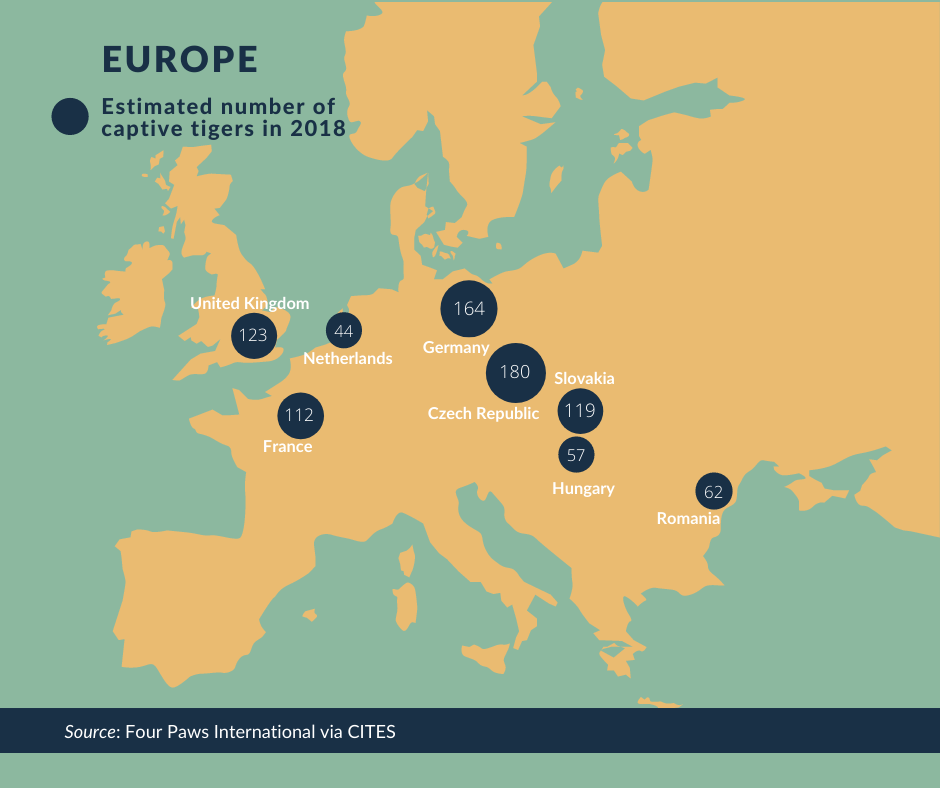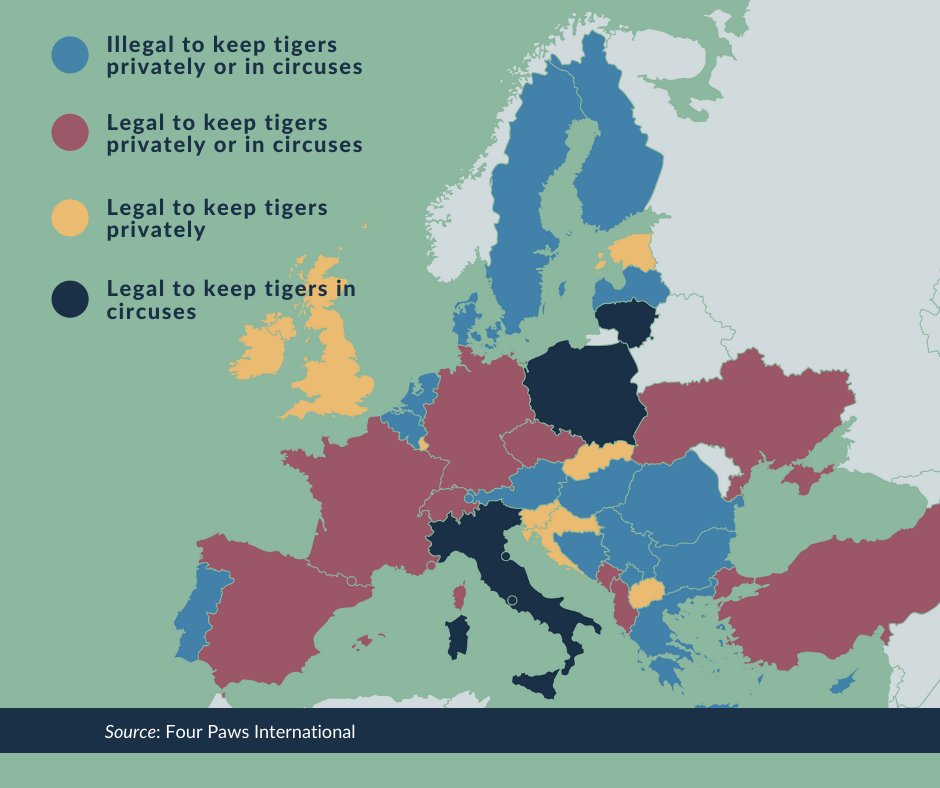As quarantine started, isolated individuals found themselves binging on Netflix and the controversial docu-series “Tiger King: Murder, Mayhem and Madness” became a quick pop-culture sensation. The series showcased the life of a man called Joe Exotic, a zookeeper and lover of big cats. In the midst of the reality-TV drama, the docu-series scratched the surface of the big cat niche culture and the illegal breeding that comes with it. Illegal breeding and trade is a big issue in the US, with around 5000 captive tigers – a number which exceeds the 3,900 tigers actually in the Asian wilderness.
This is a world-wide trade. “Tiger Farms” are a hotspot, particularly found in the Golden Triangle Special Economic Zone in Laos where tigers are killed and their parts resold. Since 2000 an average of 110 tigers have been killed and traded annually through these farms, primarily for medicinal and fashion purposes. These illegal facilities, “Tiger Farms”, often have commercial fronts such as wildlife sanctuaries where tourists can pet and take selfies with tiger cubs.

Europe is also a part of this worldwide trade, with live tigers being sold for as much as 22,000 euros. Currently there are over 1,600 captive tigers with the highest figures being recorded in the Czech Republic (180 tigers) and Germany (164). In a crackdown on the tiger trade in 2018, Czech authorities (CEI) found an illegal slaughterhouse with over 40 tigers and 88 lions. While the EU joined the Convention on International Trade in Endangered Species (CITES) in 2015, and submitted an EU Action Plan against Wildlife Trafficking in 2016, the policies concerning tiger trade and ownership vary from member state to member state. There is a lot more space for tightening controls on the tiger trade.

These tiger cubs may be cute and their fur fashionable, but these significant numbers of captive tigers are a conservation issue. A large portion of private tiger owners and breeders do not have licenses nor proper training. In the US, it is estimated that only 6% of captive tigers are actually in zoos. In such conditions, many tigers risk their health in this business. Furthermore, private owners’ breeding efforts are often commercial, where cubs are selfie props and lucrative sources of entertainment. Private breeding is often forced. Inbreeding, the mating between closely genetically-related animals, takes place and causes birth defects, malformations and other health complications. The result are vulnerable cubs that are often cast away and mistreated when too big for photos and petting. Inbreeding also often promotes the gene for white fur, a recessive mutant gene that causes “serious congenital defects”. The list of harmful consequences goes on. As Leigh Henry, co-author of the TRAFFIC “Paper Tigers” report affirms: “Any supply of tiger parts into the black market can stimulate trade and consumer demand, which could pose a serious threat to already dwindling wild tiger populations”.
While shows like Tiger King have sparked a recent public interest in the fate of these big cats, many organisations such as WWF and Four Paws have been calling for a strengthening of regulations for years. Wildlife trafficking and illegal breeding of tigers can have and have had detrimental effects on a species that is already endangered.
Find out more on the tiger trade
- Check out Four Paws here
- Check out WWF’s work on the Tiger trade here
- Check out TRAFFIC here
- To learn more on the Tiger Trade in Asia, link here. “On The Butcher’s Block: The Mekong Tiger Trade Trail” – March 2020, Environmental Investigation Agency
- To learn more on the Tiger Trade in Europe, link here. “Europe’s Second-Class TIgers: Revealing the out-of-control captive tiger numbers and commercial trade” – March 2020, FOUR PAWS
- To learn more about the Tiger Trade in the US, link here. “Paper Tigers? The Role of the US Captive Tiger Population in the Trade in Tiger Parts” – July 2008, TRAFFIC North America
- To learn more on the european policies against wildlife trafficking, link here. “EU ACtion Plan against Wildlife Trafficking” – 2016, European Union
- To learn more on the general tiger trade, link here. “Reduced to Skin and Bones Re-Examined: Full Analysis. An analysis of tiger seizures from 13 range countries from 2000-2015” – November 2016, TRAFFIC.
